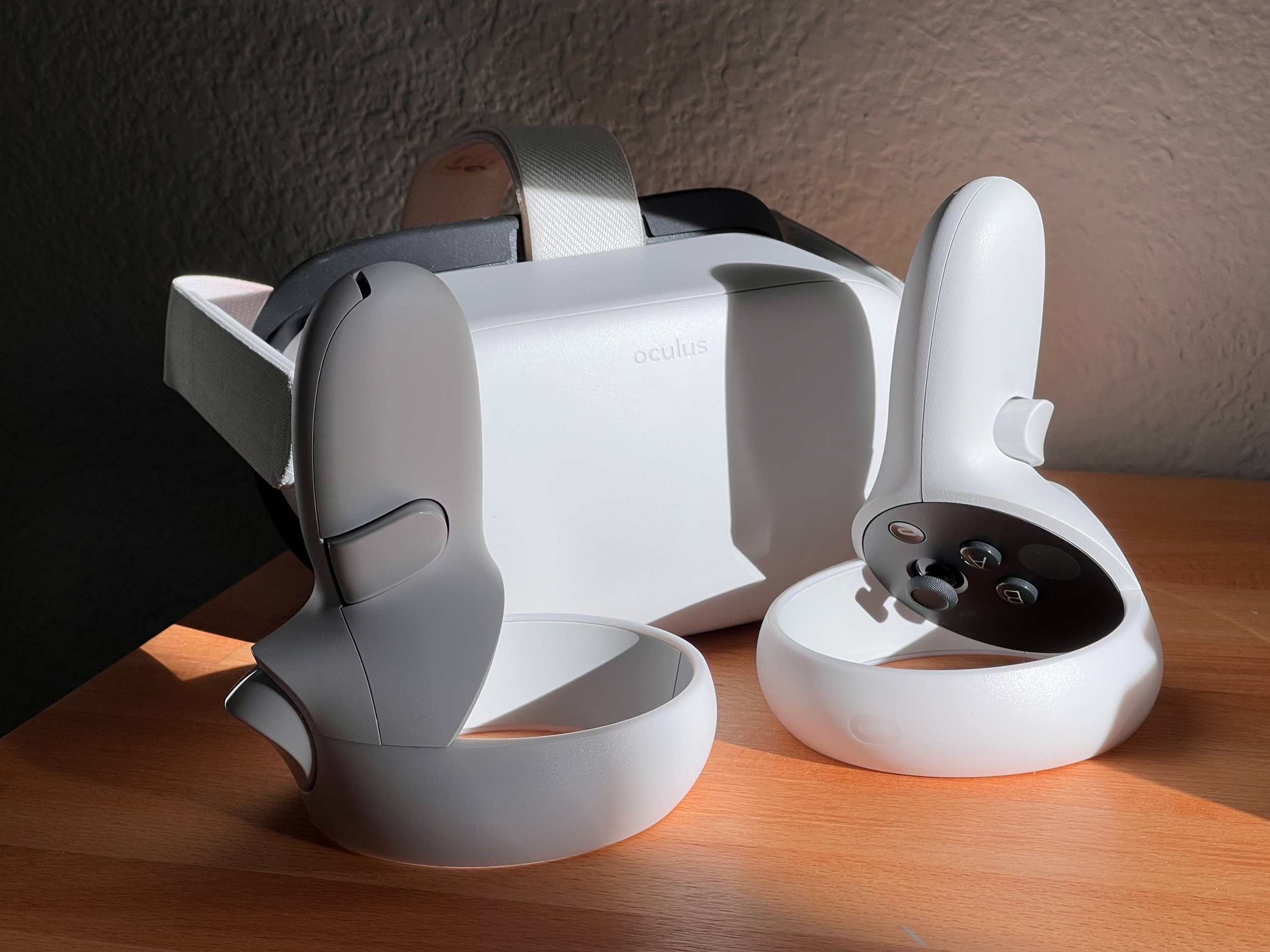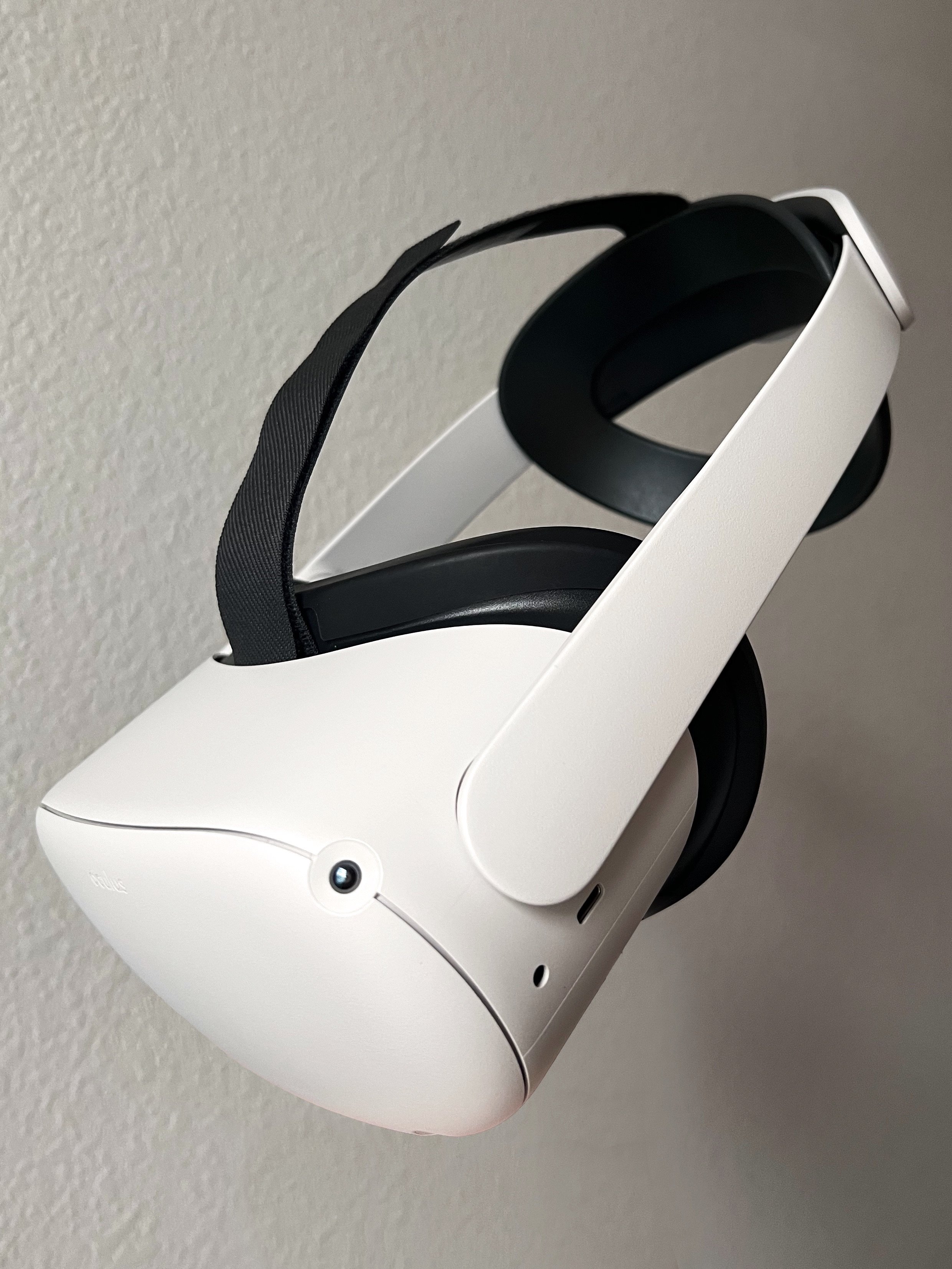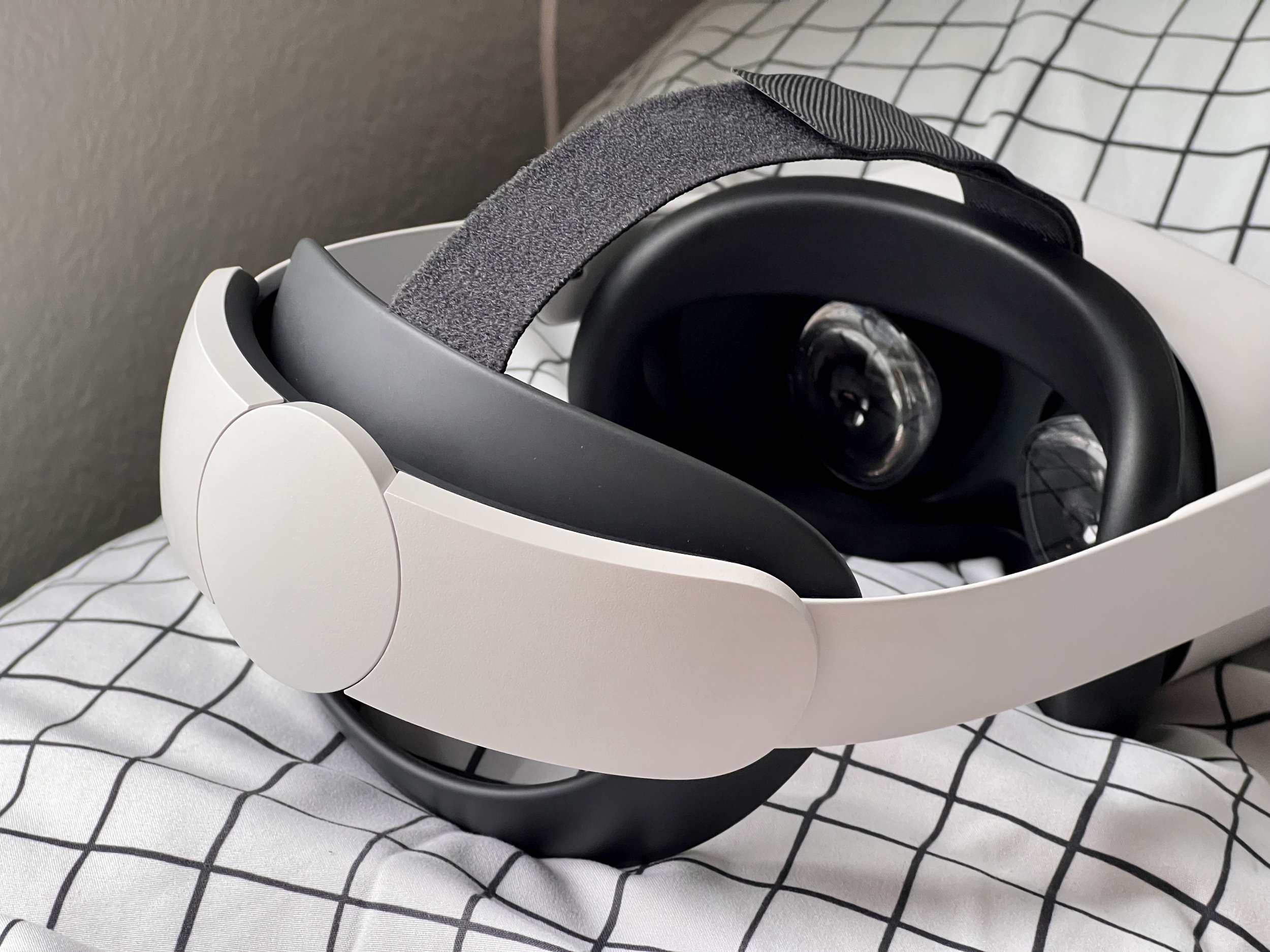A Very Meta Quest
The Quest 2 is a virtual reality headset with a small computer inside to handle rendering games and content. After using the headset for a few weeks, I’m now convinced that Meta’s early acquisition of Oculus is what will keep the company relevant as Facebook itself loses dominance and power.
Important context: Facebook (the megacorporation) was recently renamed to Meta, differentiating the parent company itself from Facebook (the social media platform). Back in 2014, the megacorporation acquired a promising VR startup called Oculus. Many VR headsets have been commercially released under the Oculus brand, including the Oculus Quest 2 I write of here. Fast forward to the present and Meta is actively phasing out the Oculus brand name. The Oculus Quest 2 is now called the Meta Quest 2. In the avoidance of further deadnaming, I’ll be referring to the headset as the Quest 2 and the company as Meta from here on out. Got it?
Hardware
The hardware here is holistically well-designed. And at its cutthroat $299 price point, I’d expect nowhere near the beauty and usability it accomplishes. The headset is housed in a simple off-white plastic enclosure with textured finish. These designers really speak my language. It’s striking, yet sensible. Even the packaging rivals Apple’s, with gorgeously-finished cardboard and custom-molded trays inside. The included charging cable and power adapter are color-matched to the correct off-white tint. Four cameras are spread across the surface for positional tracking and passthrough. On the rear you’ll find the facial interface— made of porous foam, so I’d recommend utilizing the included silicone cover for cleanliness. The image is projected through two fresnel lenses with interpupillary distance adjustable between three stiff presets.
“Direct sunlight on the lenses for even brief periods may damage the optics and display.”
Two earpieces jut out the headset’s sides, connected to a flimsy default strap, which is the first price point sacrifice I noticed. It’s fairly tedious to get this strap set for your own head shape, requiring a tug on elastic adjustments around the back or the velcro adjustments over the top. For me, the ideal adjustment that avoided digging into my ears meant distributing the weight higher on my head than I’d like and tightening it HARD. After even moderate sessions I’m left with a visible imprint on my face. Nobody wants to be seen with VR face! After much trial and error, I was left with a half-decent fit, but repeating this process for a friend to try the headset is a hellish endeavor.
Quest 2 with optional Elite Strap.
I’m not one to accept a lesser experience, so I ordered the official $49 Elite Strap, and the experience has been much better, though imperfect. The Elite Strap nicely cradles the back of the head and is adjustable via a clicky dial on the back. I still get neck pain from the weight but it’s a much nicer strap experience.
For my money, the headset’s built-in audio is actually wonderful. (Especially so considering “my money” paid for this headset was zero dollars, which I’ll touch on later.) The drivers are actually located in the headset itself, while the earpieces simply guide the sound into your ears, providing a much larger sound than I expected. It lacks bass response, and lower-frequency sounds can cause a rattling sensation. But it’s clear, full, and immersive.
I’ve generally enjoyed the two included controllers. Each features three face buttons, two triggers, and a small joystick. Every button is touch-sensitive, meaning that in-game hands can better guess the position of each finger. For my hands, I need a gorilla grip to keep them from flying across the room during fast maneuvers, but they otherwise have a good shape.
Controllers aren’t the final frontier for controlling VR experiences. One needs not peer into a crystal ball to figure this out— rather, peer into these two head-strapped lenses and it becomes clear. Meta recently added an experimental hand tracking feature to the Quest 2, which allows the user’s hands, tracked with inbuilt cameras, to control the headset. It’s a bit janky at the moment, especially in less-than-ideal lighting, but it has incredible promise and a decent selection of supported apps. I’m amazed it works at all.
Gaming
So how does it play? Crucially, the Quest 2’s tracking is miraculous. With no wires to connect nor sensors to place, it manages to keep track of exactly where I am in my space with a full six degrees of freedom, or 6DOF. The headset follows responsively as I walk around, crouch, and rotate my head. This has to be seen to be believed. I matched up in-headset footage with a third-person view for your viewing pleasure:
Mouthbreathing is a common VR activity.
The Beat Saber song I’m playing here is Rain On Me by Lady Gaga.
The display inside the Quest 2 is an LCD panel that refreshes at up to 120hz as a beta feature, with most games running at 90hz, and a few still at 72hz. I’ve found 90hz to be a great experience. The Snapdragon XR2 processor inside rarely drops frames in games, due to both great developer optimization and great silicon. Plus, the games are finally good and relatively plentiful— especially considering you can connect the Quest 2 to your computer, wirelessly or via a cable, to use as a headset for PC VR games like Half-Life: Alyx. (I’ve been doing this with my MacBook Pro booted into Windows, and it works surprisingly well!) But even standalone, there’s much to play. I’ve been enjoying Beat Saber, SUPERHOT VR, and Tetris Effect: Connected.
The Catch
If this all sounds too good to be true, it is— Provided you despise Facebook and everything else under the Meta umbrella any more than I do already. Breaking promises made at the time of the Oculus acquisition, use of the Quest 2 requires a Facebook account. And remember, it’s against Facebook’s terms of service to make an account using a fake name, so burner accounts are out of the question. What you gain in competitively subsidized hardware, you lose in your soul. I’ve bitterly accepted that any time I spend in the headset is monitored closely by Meta, and even as a major data privacy advocate, this tradeoff is one I’m willing to make.
I also got my Quest 2 for free. Long story short, I participated in a Hackathon event at the request of a friend who wanted help with user experience testing and general frontend design. Our team’s resulting project astoundingly won third place in the competition, the prize for which was a Quest 2 for each team member. Dumb luck gave me a chance to try virtual reality, a technology I’ve been massively interested in for years but never managed to experience properly.
I love this hardware, and I’m incredibly happy to own it. But I hate Meta. I don’t know that I’d ever be willing to deposit $299 directly into Zuckerberg’s comically overflowing pockets. Whether or not consumers are willing to do so has yet to be seen, but the Quest 2 is undeniably the most consumer-ready VR headset yet.
Overall… I give it my reluctant yet full recommendation to those with any interest in VR. Still not for everyone, but absolutely worth trying.







